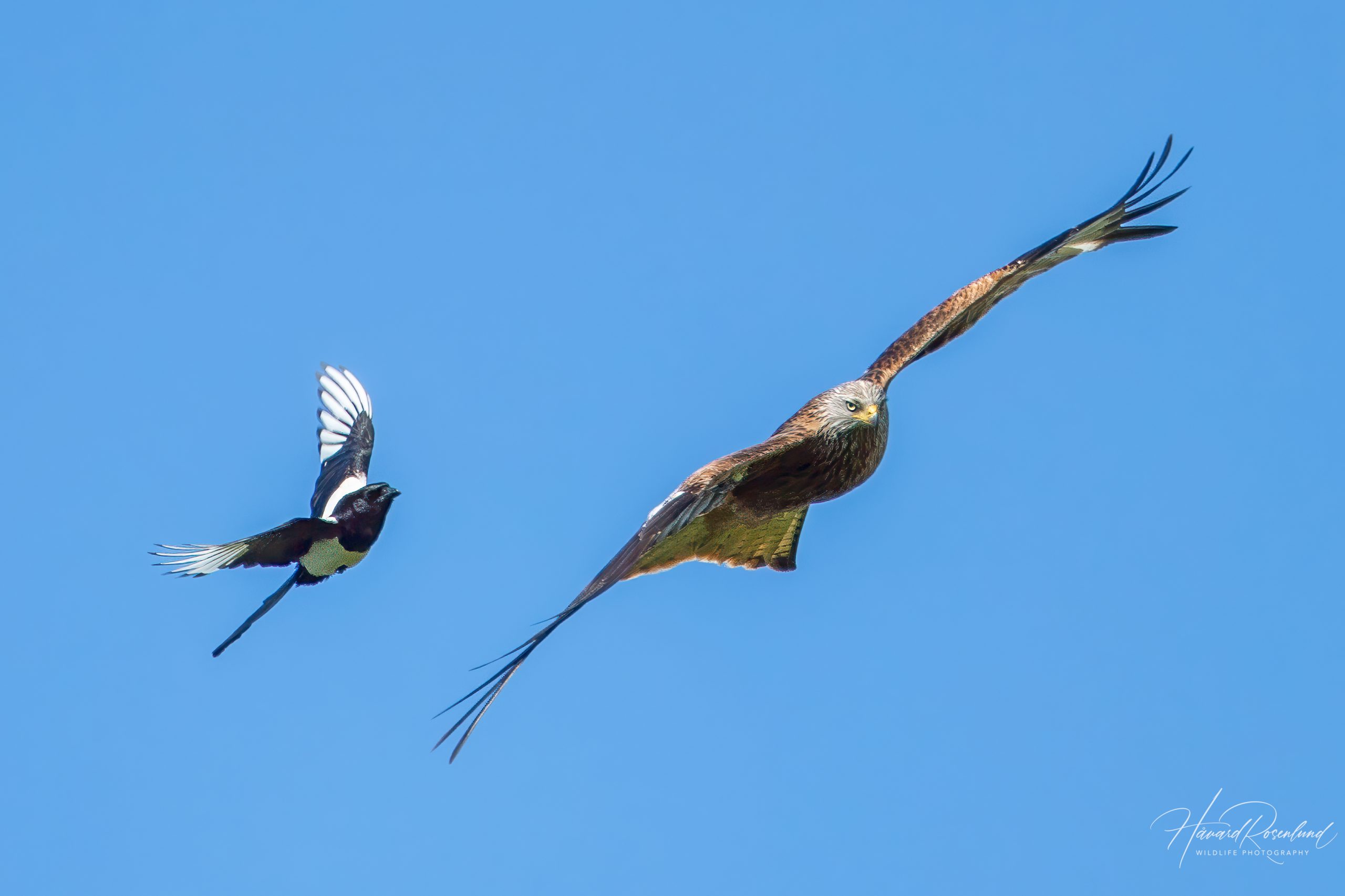Description
The red kite (Milvus milvus) is a medium-sized bird of prey found across Europe, with its range extending from the Iberian Peninsula through central Europe and into parts of the UK and Scandinavia. It is known for its striking appearance and graceful flight. It has a wingspan ranging from 175 to 195 cm (69–77 in) and a body length of 60 to 70 cm (24-28 in), making it one of the larger raptors in Europe. The red kite is easily identifiable by its reddish-brown body, forked tail, and distinctive white patches under the wings. Its head is pale with darker streaks, and it has yellow legs and a slightly hooked beak. It is similar to the black kite (Milvus migrans), but can be distinguished by their larger size, more reddish plumage and paler head.
Diet & habitat
Red kites inhabit a variety of landscapes, including woodlands, farmland, and even urban areas. They prefer regions with a mix of open spaces for hunting and wooded areas for nesting. Their diet is highly opportunistic and varied; they feed on carrion, small mammals, birds, and insects. Red kites are known for their scavenging habits, often seen soaring over roadsides looking for roadkill. They have also adapted to feeding on human refuse in some areas.
Behavior
Red kites are generally solitary or found in pairs, but they can form loose colonies, particularly during the breeding season. They are known for their acrobatic flight patterns, often seen gliding and soaring with minimal wing flapping. Red kites communicate through a series of high-pitched whistles and calls, especially during courtship displays.
Migration
Red kites are partial migrants, with northern populations typically migrating to southern Europe or North Africa for the winter. Migration distances can vary significantly, with some individuals traveling over 1,000 kilometers. They usually migrate in small groups and tend to follow established routes, utilizing thermal currents to conserve energy during long flights.
Nesting
The breeding season for red kites starts in early spring. They build large nests in tall trees, often reusing the same nest year after year. Both males and females participate in nest building, using sticks and lining the nest with softer materials. The female lays 1-3 eggs, which she incubates for about 30-32 days. Both parents are involved in feeding the chicks, which fledge approximately 50-60 days after hatching.
Status
The red kite is listed as least concern on the IUCN Red List, as its population is now increasing across most of its range. It was previously declining in many areas, primarily due to persecution, poisoning, and habitat loss. Conservation efforts, including legal protection and reintroduction programs, have led to population recoveries in many areas, particularly in the United Kingdom where the species was on the brink of extinction. However, threats such as illegal poisoning and collisions with wind turbines still pose significant risks.










